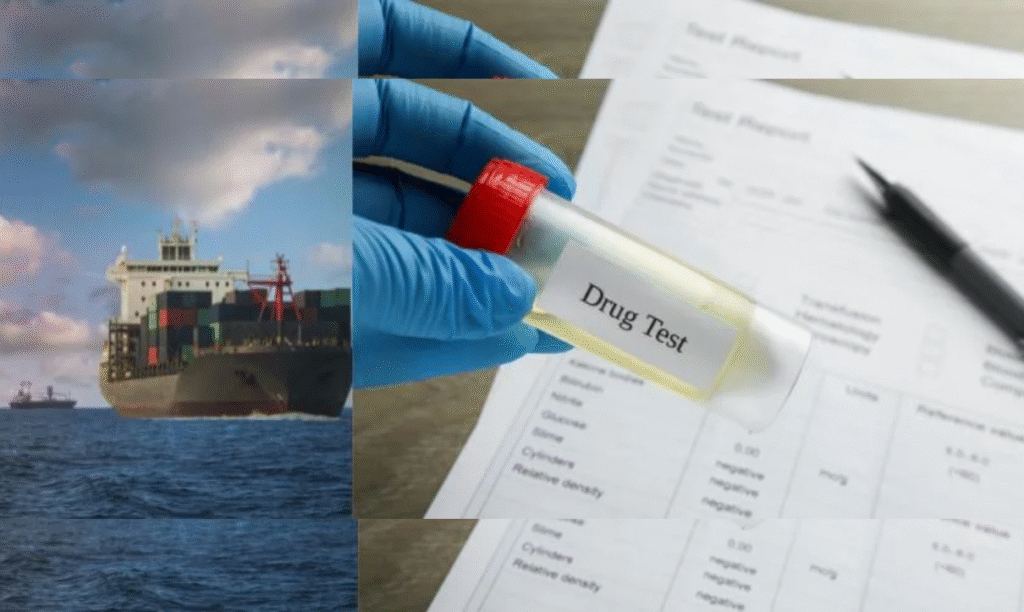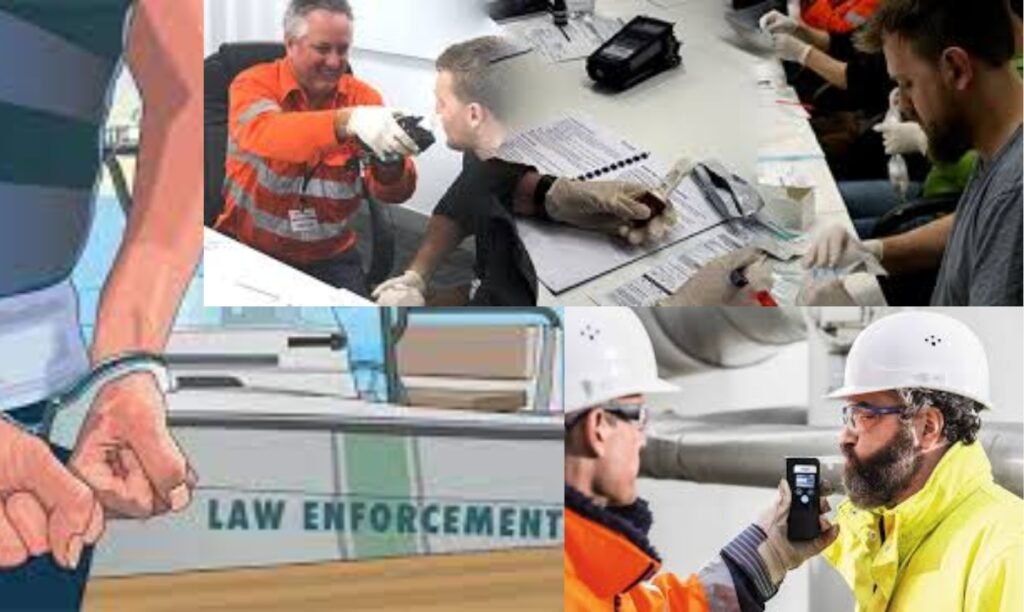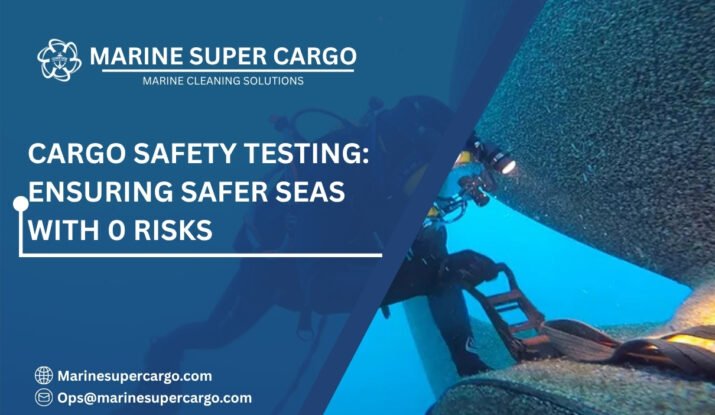Cargo Safety Testing: The Role of Drug & Alcohol Measures in Supercargo Handling
Maritime operations are like clockwork—every gear must turn without disruption. When one fails, the entire machinery is put in danger. In shipping, that “gear” often comes down to human reliability. This is where Cargo Safety Testing steps in, especially with drug and alcohol enforcement during supercargo handling. It ensures crew alertness, sharper judgment, and protection against costly mistakes.
In this article, we’ll explore how testing saves lives, reduces risks, ensures compliance with global regulators like IMO, and paves the way for a safer and greener maritime future.
Why Cargo Safety Testing Matters in Shipping
The movement of cargo is high-stakes—fuel, chemicals, containers, steel, food supplies, or electronics. A single misstep in supercargo handling can cause accidents, financial losses, or worse, human casualties.
Cargo Safety Testing addresses this risk directly. By ensuring that officers and handlers are fit for duty, ship operators protect crew, cargo, and the environment. It builds accountability, minimizes downtime, and assures ports and clients of operational integrity.
For stakeholders, it’s not just about compliance—it’s about trust. Ships that uphold stringent safety testing are more likely to retain contracts, gain approvals from port authorities, and avoid detentions at terminals worldwide.

The Human Factor: Why Drug & Alcohol Testing Saves Lives
Navigation equipment may be advanced, but human decision-making is still the captain of the ship. Impairment from drugs or alcohol can weaken reaction times, cloud communication, and lead to poor judgment during supercargo handling. learn more about the Importance of Drug Testing at Work.
Cargo Safety Testing identifies potential impairment before critical operations start. Think of it as the protective lock before turning the ignition key. Without testing, shipping companies put hazardous materials, crew lives, and sustainable operations at risk. Testing isn’t an obstacle; it’s a safeguard against preventable tragedies.
Global Compliance and Regulatory Requirements
Maritime authorities worldwide have zero tolerance for substance impairment. Regulations by IMO, IMCA, and the MARPOL Convention provide clear frameworks. Many port facilities align with the IAPH World Ports safety guidance, requiring evidence of workplace fitness.
Cargo Safety Testing helps ensure that shipping companies avoid penalties, port detentions, and suspension of operating licenses. It strengthens adherence to international law while sending a message of accountability to charterers, insurers, and regulators. In essence, compliance is not only about avoiding trouble—it’s about showing respect for human life and marine ecosystems.
✅ 4 Things to Check for Safety at Sea pic.twitter.com/dAxhJQ2i6U
— Marine Super Cargo (@Marinsupercargo) September 14, 2025
Cargo Handling Risks Without Testing
Consider the metaphor of a storm. No one welcomes it on calm waters, yet when cargo handlers operate impaired, it’s like inviting a storm onto the deck.
Without Cargo Safety Testing, risks multiply:
- Mistakes in heavy-lift cargo handling
- Miscommunication with port authorities
- Breaches in hazardous material protocols
- Potential collisions or fires during loading
The results affect everyone—shipowners face repair costs, insurers raise premiums, and the environment faces pollution threats. Testing is essentially weather-proofing operations.
Cost Benefits of Cargo Safety Testing
Many shipping companies worry about the costs of drug and alcohol testing. But failing to test is far more expensive.
Cargo Safety Testing reduces:
- Repair expenses from accidents
- Compensation and injury claims
- Delays at ports due to non-compliant crews
- Insurance costs, as compliant ships are “low-risk”
The upfront investment pays in multiples when weighed against risks. Safe operations keep vessels on schedule, protect contracts, and improve overall profitability. Read more about Employee Alcohol Testing.
Cargo Safety Testing and Environmental Impact
One overlooked element of substance-related accidents is environmental harm. A dropped container of chemicals due to impaired handling can lead to spills, contamination, and ecological damage.
By enforcing Cargo Safety Testing, ship operators indirectly protect marine life and comply with environmental conventions like the MARPOL Convention. Cleaner operations not only prevent disasters but also contribute to sustainable shipping goals, aligning with global decarbonization movements.
The Role of Supercargo Officers in Safety
The supercargo officer plays a critical role in overseeing loading and discharge operations. Their judgment, precision, and ability to react under pressure are vital.
Cargo Safety Testing supports supercargo officers by creating a reliable operational culture. When officers know colleagues are all “fit for duty,” collaboration improves, and safety becomes a shared responsibility. Testing also strengthens leadership credibility, ensuring officers can confidently direct teams.
Marine Supercargo Expands Services: Drug & Alcohol Testing for Safer Seas
The traditional role of a supercargo officer was to ensure accurate cargo stowage and prevent damage. Today, safety demands have expanded that responsibility into human performance management.
Marine supercargo services now include Cargo Safety Testing for drugs and alcohol to ensure fitness before operations begin. This expansion boosts compliance with frameworks by IMO and IMCA while also enhancing vessel efficiency.
For shipping companies, the message is clear: cargo doesn’t just move safely because of steel and ropes—it moves safely because people are alert, sober, and capable. By aligning human readiness with technical precision, the maritime industry takes another step toward safer seas and sustainable growth.
Technology in Cargo Safety Testing
Technology is reshaping how tests are done. AI-enabled breathalyzers, remote medical monitoring, and automated reporting minimize delays and improve accuracy.
Cargo Safety Testing no longer relies solely on manual oversight. Advanced systems ensure quick results without slowing cargo operations. Automation not only prevents human error in testing processes but also integrates results with compliance software, making audits easy for regulators.
AI, Data, and the Future of Testing
Artificial intelligence and big data are transforming maritime safety. Imagine a system where predictive analytics identify patterns—such as fatigue risks or frequent testing failures—before accidents happen.
For Cargo Safety Testing, AI integration means more proactive strategies, less paperwork, and real-time global compliance checks. This aligns safety practices with trends shaping the future of global shipping, where efficiency and prevention outrank reactivity.
Training and Crew Awareness Programs
Testing doesn’t stand alone. Training and awareness campaigns are critical to cultivating a safety-first culture.
Cargo Safety Testing programs backed by education help crew understand why testing matters. Rather than seeing it as a burden, seafarers view it as a shield protecting themselves, their colleagues, and their livelihoods. Ports and shipping firms that tie awareness with enforcement often see higher compliance rates and reduced violations.

The Future of Cargo Safety and Maritime Innovation
As environmental challenges and operational complexities grow, safety will continue to evolve. Drug and alcohol testing will merge with mental wellness checks, sleep monitoring, and ergonomic assessments.
In the new era, Cargo Safety Testing won’t just identify impaired individuals—it will predict risks and prevent them. With alliances through IAPH World Ports and innovators like CleanShip.co, maritime safety standards will continue rising, keeping crews, cargo, and oceans safe.
Conclusion: Three Takeaways for the Future of Safer Seas
First, Cargo Safety Testing safeguards lives and cargo by detecting risks before operations begin.
Second, it ensures compliance with global maritime authorities, protecting both companies and the environment.
Third, future innovations like AI-driven systems will make testing more reliable and efficient.
To learn more about eco-friendly compliance and operational safety, explore solutions with CleanShip.co. Together, the shipping industry can sail toward a future where accidents, detentions, and risks are no longer part of the voyage.
FAQs:
Q1. What is drug and alcohol testing in shipping?
Drug and alcohol testing evaluates the fitness of crew members by detecting impairment. It ensures safe cargo handling, reduces risks of accidents, and helps shipping companies stay compliant with maritime authorities.
Q2. How does Cargo Safety Testing benefit shipping companies?
By ensuring fitness for duty, testing reduces accidents, protects cargo, lowers insurance premiums, and builds trust with regulators and clients. It’s a financial and safety safeguard.
Q3. Which international regulations require Cargo Safety Testing?
Agencies like IMO, IMCA, and MARPOL Convention provide guidelines requiring zero tolerance for substance abuse. Many ports under the IAPH World Ports enforce these rules strictly.
Q4. How does hull cleaning connect with cargo safety?
Efficient CleanShip.co hull cleaning improves fuel efficiency and reduces environmental risks. Pairing eco-friendly vessel care with Cargo Safety Testing ensures safe, sustainable operations across all fronts.
Q5. What innovations will shape the future of testing?
AI, predictive analytics, and remote monitoring tools will make Cargo Safety Testing faster, more accurate, and more proactive. This ensures zero disruption to operations while improving compliance globally.


